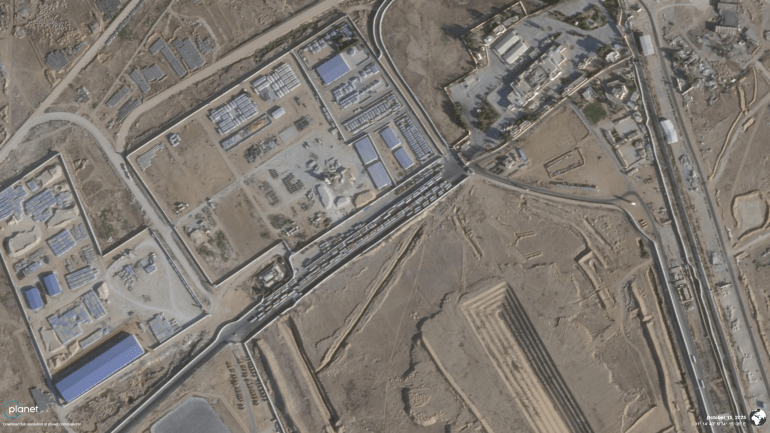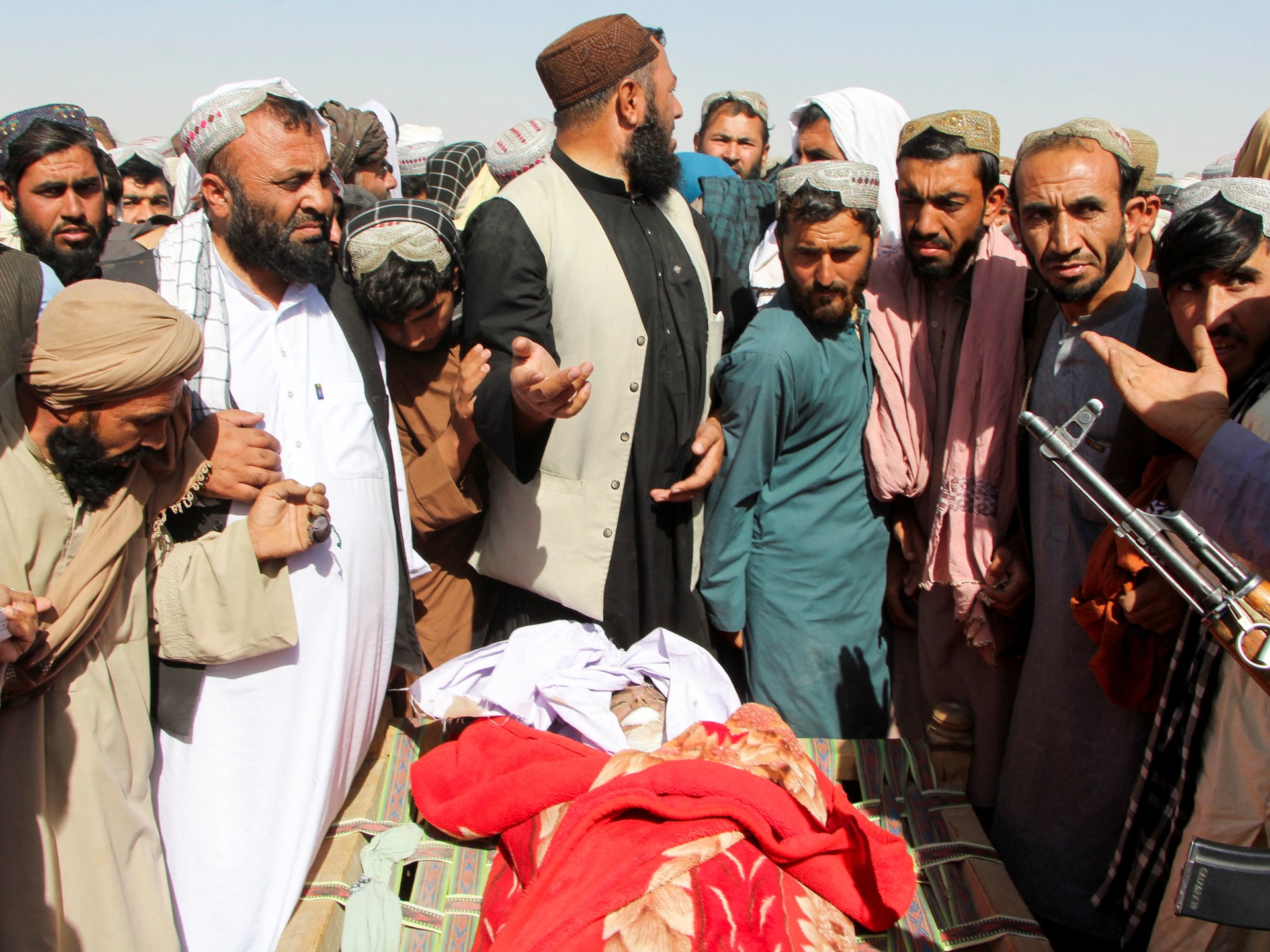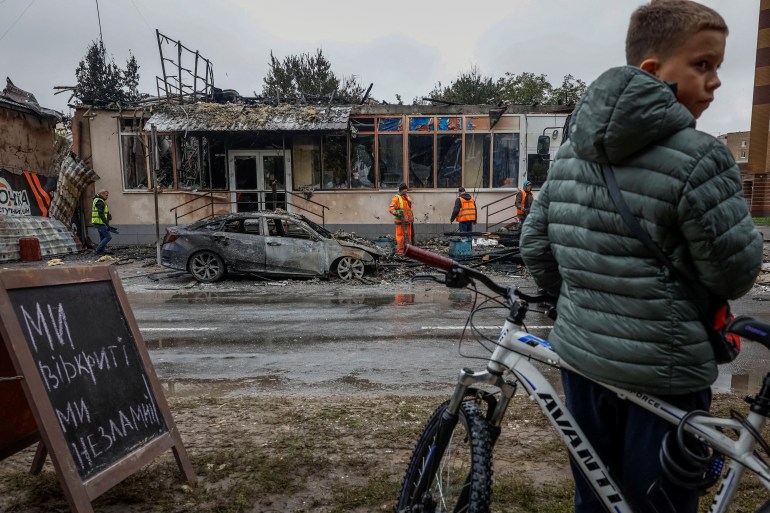Despite a ceasefire deal with Israel, Palestinians across the devastated Gaza Strip continue to go hungry as food supplies remain critically low and aid fails to reach those who need it most.
As per the ceasefire agreement, Israel was supposed to allow 600 humanitarian aid trucks into Gaza per day. However, Israel has since reduced the limit to 300 trucks per day, citing delays in retrieving bodies of Israeli captives buried under the rubble by Israeli attacks.
Recommended Stories
list of 4 itemsend of list
According to the UN2720 Monitoring and Tracking Dashboard, which monitors humanitarian aid being offloaded, collected, delivered and intercepted on its way into Gaza, from October 10-16, only 216 trucks have reached their intended destinations inside Gaza.
According to truck drivers, aid deliveries are facing significant delays, with Israeli inspections taking much longer than expected.
Satellite images captured by Planet Labs on October 14 and 15 show a large number of trucks queuing on the Egyptian side of the Rafah crossing and heading towards the Kerem Abu Salem crossing.


‘Palestinians want food’
While some food aid has trickled in over the past few days, medical equipment, therapeutic nutrition and medicines are still in extremely short supply, despite being desperately needed by the most impoverished, particularly malnourished children.
Reporting from Deir el-Balah, in central Gaza, Al Jazeera’s Hind Khoudary said some commercial trucks have entered Gaza over the past few days, but most Palestinians do not have the ability to buy any of the items they are bringing in as they have spent all of their savings in the past two years.
So far, what has arrived in the trucks includes “wheat, rice, sugar, oil, fuel and cooking gas”, she said.
While food distribution points are expected to open for parcels and other humanitarian aid, people in Gaza have yet to receive them. “Palestinians want food, they want shelter, they want medicine,” Khoudary said.
She added that even 600 trucks a day would be insufficient to meet the needs of Gaza’s entire population.

Food ‘is not a bargaining chip’
The UN humanitarian chief, Tom Fletcher, has urged Israel to open more border crossings for humanitarian aid.
“We need more crossings open and a genuine, practical, problem-solving approach to removing remaining obstacles. Throughout this crisis, we have insisted that withholding aid from civilians is not a bargaining chip. Facilitation of aid is a legal obligation,” Fletcher said.
Since the ceasefire began, 137 World Food Programme trucks have entered Gaza as of October 14, delivering supplies to bakeries and supporting nutrition and food distribution programmes.
With the ceasefire in effect, WFP is now scaling up.
🔹137 trucks have already entered #Gaza — supporting bakeries, nutrition, and food distributions.
🔹170,000+ MT of food ready to move, enough to feed 2M people.
The goal: flood Gaza with food, fast. The ceasefire must hold. pic.twitter.com/AjKBu8rap7
— World Food Programme (@WFP) October 14, 2025
Israeli authorities continue to block UNRWA
The United Nations Relief and Works Agency (UNRWA) – the primary and largest organisation providing aid to Palestinians – has faced significant restrictions imposed by Israel.
The agency, which was responsible for delivering food, medical care, education and emergency assistance, says it has enough food aid in warehouses in Jordan and Egypt to supply the people in Gaza for three months.

This includes food parcels for 1.1 million people and flour for 2.1 million, and shelter supplies sufficient for up to 1.3 million individuals.
However, despite the ceasefire, Israeli authorities are continuing to block them from entering.
UNRWA has enough food outside #Gaza to supply people there for three months, amid desperate need. Our teams stand ready to deliver it.
But despite the #ceasefire, the Israeli Authorities’ block on UNRWA bringing any supplies into Gaza still continues after over 7 months.
Let us… pic.twitter.com/O3fwK70d5V
— UNRWA (@UNRWA) October 16, 2025
Malnutrition among children
As of October 12, at least 463 people, including 157 children, have died from starvation amid Israel’s blockade of the Gaza Strip. Nearly one in four children suffers from severe acute malnutrition.
After prolonged starvation, food must be reintroduced carefully under medical supervision to avoid re-feeding syndrome, a potentially fatal condition in which sudden intake of nutrients causes dangerous shifts in electrolytes, affecting the heart, nerves and muscles. A larger supply of nutritional aid, given safely, could dramatically save lives.

According to the United Nations Office for the Coordination of Humanitarian Affairs (OCHA), 90 percent of children in Gaza less than two years of age consume fewer than two food groups each day, which doesn’t include protein-richfoods.
At least 290,000 children between the ages of six months and 5 years, and 150,000 pregnant and breastfeeding women require feeding and micronutrient supplies.
In addition to this, there are an estimated 132,000 cases of children less than the age of five, and 55,000 pregnant and breastfeeding women projected to be suffering from acute malnutrition by June 2026, if immediate food aid isn’t made available.











